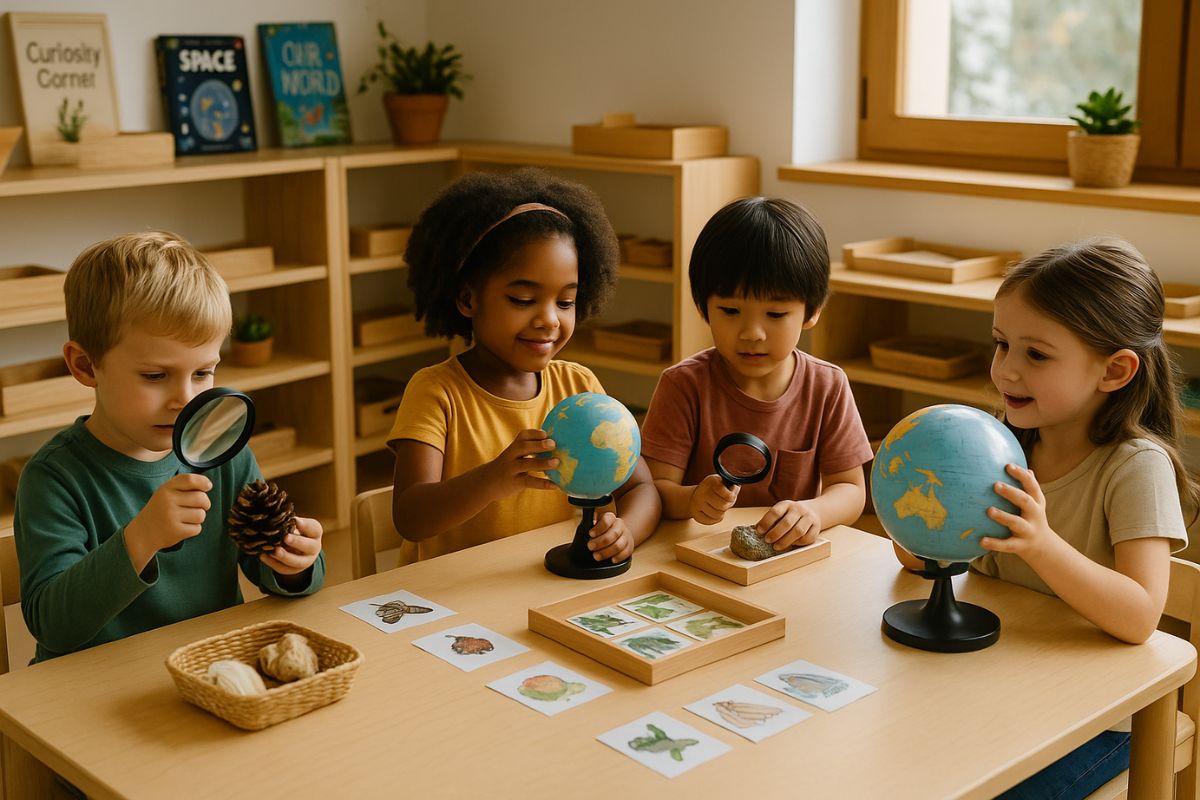Children are natural question-askers. They wonder how birds fly, why the moon changes shape, or what ants carry back to their nests. In a Montessori environment, this curiosity is not just welcomed—it’s essential. Whether it’s exploring the wonders of nature or diving into USA facts that broaden their worldview, children thrive when presented with information that feels like little treasures. Their minds open even more to learning, observation, and discussion.
Understanding how to introduce meaningful facts can help teachers and parents support independent thinking. A simple, surprising truth often sparks a cascade of further questions and connections.
Why Small Facts Matter in Early Education
Montessori classrooms are full of fascinating details. A leaf’s parts. The distance between planets. The number of bones in the human hand. These facts are not trivia—they are keys. They unlock wonder and give children tools to name and understand their world.
When young children hear something unexpected—like a jellyfish having no brain or that bats sleep upside down—it sticks. It also invites more learning. One question leads to another, and before long, a child is drawing, writing, or experimenting because they are driven by interest, not instruction.
Montessori’s approach encourages giving facts at the right moment: when a child is attentive, curious, and engaged in the context of a lesson or conversation.
Building a Culture of Wonder
Children need space and time to wonder. In Montessori classrooms, the environment itself encourages questions. Plants, animals, objects from different cultures, globes, magnifying glasses, and books all invite exploration.
The adult’s role is to be a guide and a co-learner. Instead of giving long explanations, the adult can offer a single, striking fact and let the child lead the way from there.
The aim is not to impress with knowledge, but to light the flame of curiosity. A child who is intrigued will naturally seek more information.
Facts That Fuel the Imagination
When choosing which facts to share, think about what might surprise a child or make them want to look closer. The fact should be clear, concrete, and brief.
For example, telling a child that octopuses have three hearts invites follow-up. Why? What do they need them for? Do all animals have three hearts?
From there, a child might read about sea creatures, draw an octopus, or make a clay model. That one fact becomes a launchpad for learning across subjects.
The most memorable facts are usually about the natural world, human body, space, and unique cultural traditions. They feel real and immediate, not abstract.
Respecting the Child’s Pace
Some children will latch onto a new fact and run with it. Others will need time to reflect. In Montessori, children are trusted to absorb information in their own way.
A classroom might have a book about volcanoes near the science shelf. One child sees the image of lava and asks what it is. A guide explains that it’s melted rock from inside the Earth. Another child nearby hears this and quietly picks up the book later.
The fact spreads, not by force, but through authentic interest and a sense of wonder shared by the group.
Supporting Language Development
Sharing facts helps children build vocabulary and practice language skills. When a child hears “a hummingbird beats its wings 70 times a second,” they are learning more than just content. They are hearing rhythm, numbers, and new words like “hummingbird” and “beats.”
Repeating the fact or using it in a sentence helps it stick. Over time, children begin using these words in their writing, storytelling, and classroom conversations.
Language grows from meaningful context. Surprising, interesting facts create that context naturally.
Encouraging Deeper Inquiry
In Montessori, facts are often paired with materials. A globe may be used to explain why some places are cold and others warm. A set of bones may show how many are in the hand. When a child asks “Why does this happen?” the guide can offer a starting point, not a full lecture.
This method encourages research and independent work. A question becomes a project. A child may decide to look up more facts, create a chart, or prepare a presentation to show friends.
The fact is not an end point—it’s a beginning.
Practical Tips for Adults
Introduce one fact at a time. Give space after sharing. Watch the child’s reaction and offer follow-up only if they seem interested.
Have reference books, models, or objects ready so the child can explore more if they wish. Try to present facts within a context. A lesson on animal tracks might include the fact that a bear’s footprint can be as big as a dinner plate.
Speak plainly. Use correct terms, even if they sound advanced. Children enjoy using real words like “mammal,” “carnivore,” or “volcano.”
Celebrate the child’s questions. If you don’t know the answer, look it up together.
The Role of Joy in Learning
Curiosity is rooted in joy. When children find joy in learning, they take more ownership of it. Montessori education aims to build this kind of joyful independence—not through flashy presentations, but through quiet, meaningful interaction with the world.
Facts, in this setting, are more than knowledge—they are invitations. They lead children toward observation, conversation, writing, drawing, and discovery.
Whether a child is fascinated by insects or stars, water or music, the right fact can make them want to learn more—not because they’re told to, but because they genuinely want to understand.
Every child deserves to feel the thrill of learning something new. Montessori education honors that feeling by respecting the child’s mind and trusting in their ability to build knowledge through curiosity. Sharing meaningful facts is one way we help children take their first steps into a lifetime of learning.
